Flanked by a Trastevere police station and a Regione Lazio office tower that puts the brute in “brutalist”, the Roman neighborhood where the unassuming Church of San Francesco a Ripa Grande is located doesn’t seem like a place for a saint. That was the case even when Saint Francis of Assisi lived there back in 1209.
At that time, the site was a small Benedictine convent next to a hospital caring for lepers and the poor. Saint Francis may have chosen it precisely for its humble surroundings — better to express his solidarity with the downtrodden.
The wandering evangelist from Assisi had come to the city on a quixotic mission to visit Pope Innocent III, seeking a stamp of approval for the new religious order he was creating. No one is quite sure how long Francis stayed in his upstairs cell at the convent, but he spent at least a few months being questioned and challenged by one of the cardinals and then the pope himself. He was probably happier negotiating with the wolf outside of Gubbio (where he was said to have saved the town from the animal’s deadly attacks). No doubt he missed his wooded Umbrian hills.
I first learned about the Church of San Francesco a Ripa from an unlikely story in the New York Times back in 2013. Less than a year earlier, Jorge Mario Bergoglio had been elected pope and took the name Francis in honor of the saint from Assisi, whom he cited as an inspiration to “always remember the poor”. Seeing a rising interest in all things Franciscan, the brothers of San Francesco a Ripa shrewdly decided this would be an opportune moment to restore the upstairs room where Saint Francis had lived, which had been closed because of leaks and electrical problems.
Unfortunately, the property fell under the control of the City of Rome rather than the Catholic Church and the brothers felt there were already too many pressing demands on the public coffers. So they did what any enterprising Franciscan monk would have done in the teens of the 21st century. They launched a KickStarter campaign.
Not surprisingly. the story caught on quickly with international media and soon landed on the front page of the New York Times. C and I, like many others around the world, decided to make a contribution. But unlike many of the international donors, we were frequently in and out of Rome. So the next time we were in town, we arranged a visit to see the work in progress.
In those days, you could only enter the room from the convent next door. We met Stefano Tamburo, the brother behind the initiative, who led us into a tiny alcove already in the midst of restoration.
It was not a long tour. The space itself was the size of a room at the Yotel minus the bathroom— nothing more than a small cubicle, with one tiny window to the outside world. Good thing the average height of a medieval man was only five foot seven, I thought to myself.
Brother Tamburo read my mind, and pointed out that Francis would have been joined there by at least several of his 11 cohorts, the Friars Minor as he called them. The window would have posed a choice between the sweltering heat of an upstairs apartment in Rome in the summer and the threat of contaminated air blowing in from the sick and dying people in the streets below.
Though I’ve held on all these years to my San Francesco a Ripa hoodie that came as a reward for our donation, I’d not returned there since the renovation was completed. When Pope Francis was in the hospital for several weeks in March, it seemed like a good moment to visit the brothers in Trastevere.
Today, you enter the cell of St. Francis through the church itself, which is reason enough for a visit. Despite its somewhat austere Franciscan style, it’s rich in art and history, including the last Bernini sculpture done entirely by the master’s own hand, an anguished portrayal of the Blessed Ludovica Albertoni, a Roman woman who was known in the late 15th century as the mother of the poor and benefactress of orphans.
Other than a small sign outside the doors, there’s not much mention of St. Francis’ cell within the sanctuary, so you need to ask the brother who tends the church to take you there. A genial silver-haired man in his brown robe and windbreaker, he leads you back through the heavy wooded sacristy, grabs his key, and guides you up a narrow stairwell into the chamber itself.
I hardly recognized the place, which is a strange thing to say about a room that’s not much more than four stucco walls. But now the cell is dominated by an ornate wood and gold gilt altarpiece that adds a little more razzle-dazzle than seems appropriate for a space dedicated to the most austere of the saints.
There are five paintings on the facade of the altar, and as we admired them, the brother advised us to set our cameras to video. Then he slyly pushed a button on a side panel and an internal mechanism flipped the paintings, exposing a set of trick doors on both sides that swung open to reveal little silver coffins. Each one contained a relic of the most important Franciscan saints.
To be fair, St. Francis— a man of childlike delight who often referred to himself as a “jester”— probably would have loved it.
For all of the wondrous art Saint Francis has inspired, I think it’s not easy to capture the essence of such a life in a monument. On the far wall of the cell at the Church of San Francesco a Ripa, you can see the stone that Francis used for a pillow while he was sleeping there. For me, that rock holds more fundamental truth than any of the breathtaking works by Giotto or Cimabue in the Basilica at Assisi. As G.K. Chesteron wrote about St. Francis: “the little poor man” as he was known, “made the very act of living an art”.
The same may be true of Pope Francis. C and I went on Wednesday evening to St. Peters where he’ll lie in state until the funeral on Saturday. It was strange to see him under Bernini’s towering gilded bronze canopy, Swiss Guards at his side. Even with all the trappings of papal power, he looked small and very human.
Only the plain wooden casket in which he rested seemed in keeping with the man himself. Amidst the gold and marble of the basilica, where the walls almost burst with the grandeur and pomposity of popes gone by, the simplicity of that little wooden box spoke for itself. Just as Francis’ life did, and St. Francis’ before that. It was hard to miss the point.
And those words came to me: the poor, the poor. Then, right away, thinking of the poor, I thought of Francis of Assisi…even as the votes were still being counted. Pope Francis, on selecting his papal name.

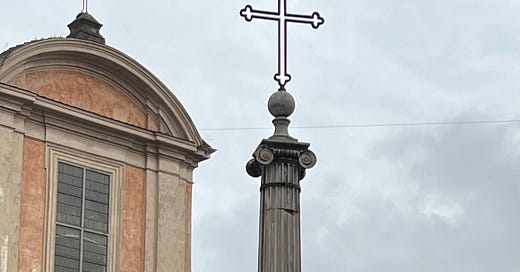




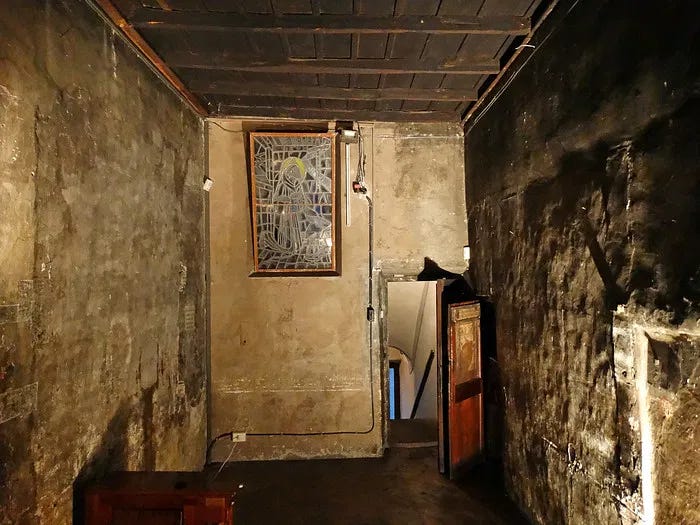
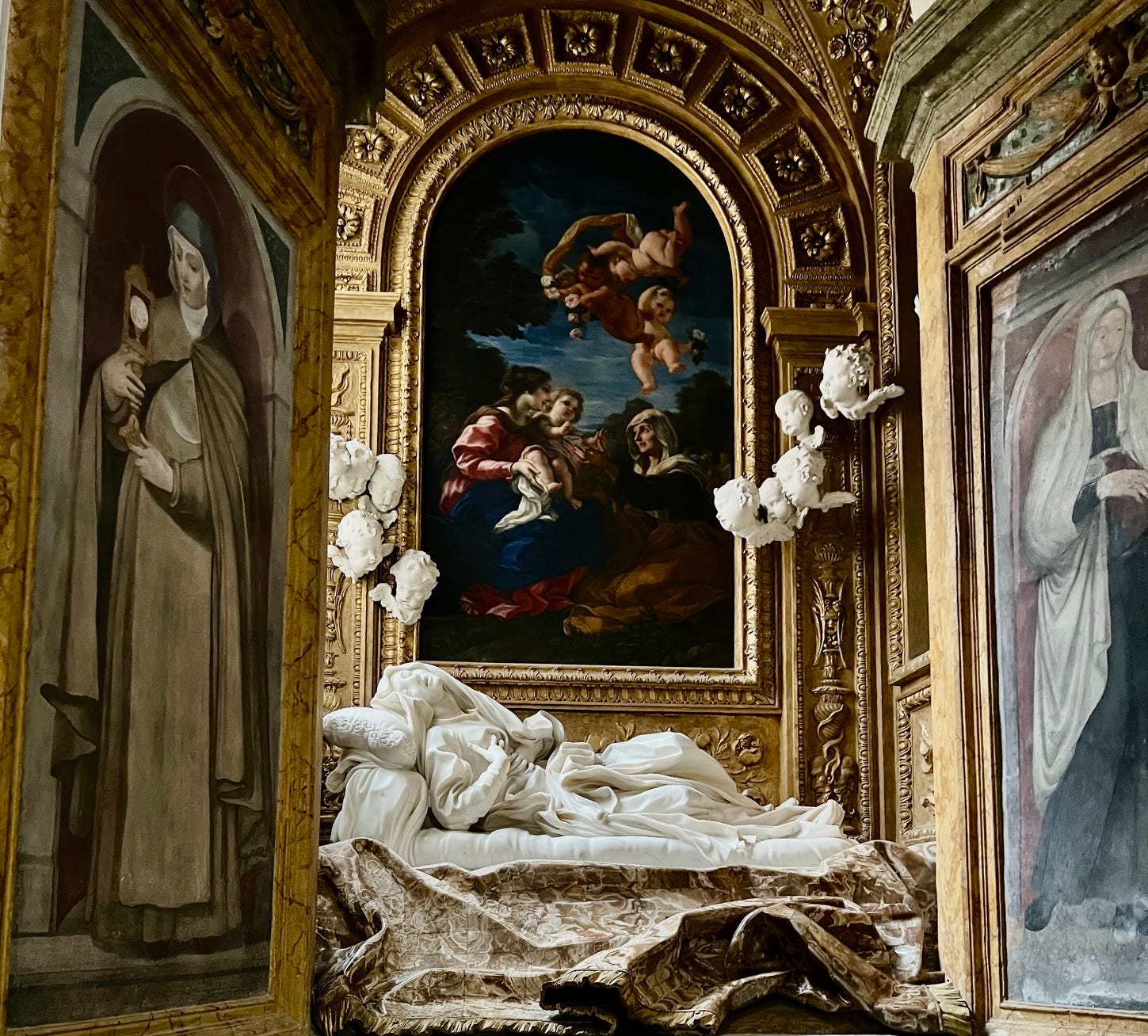

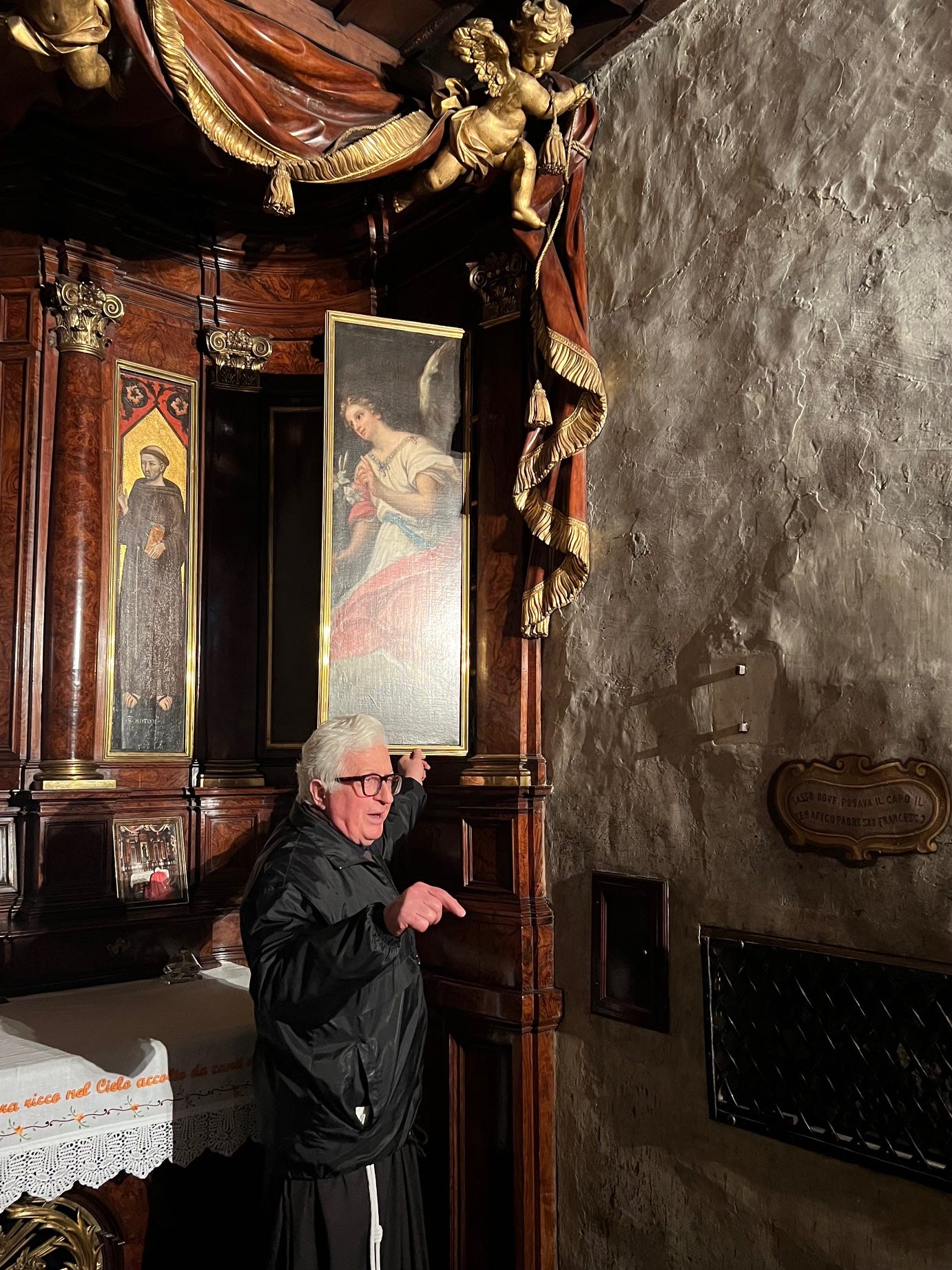
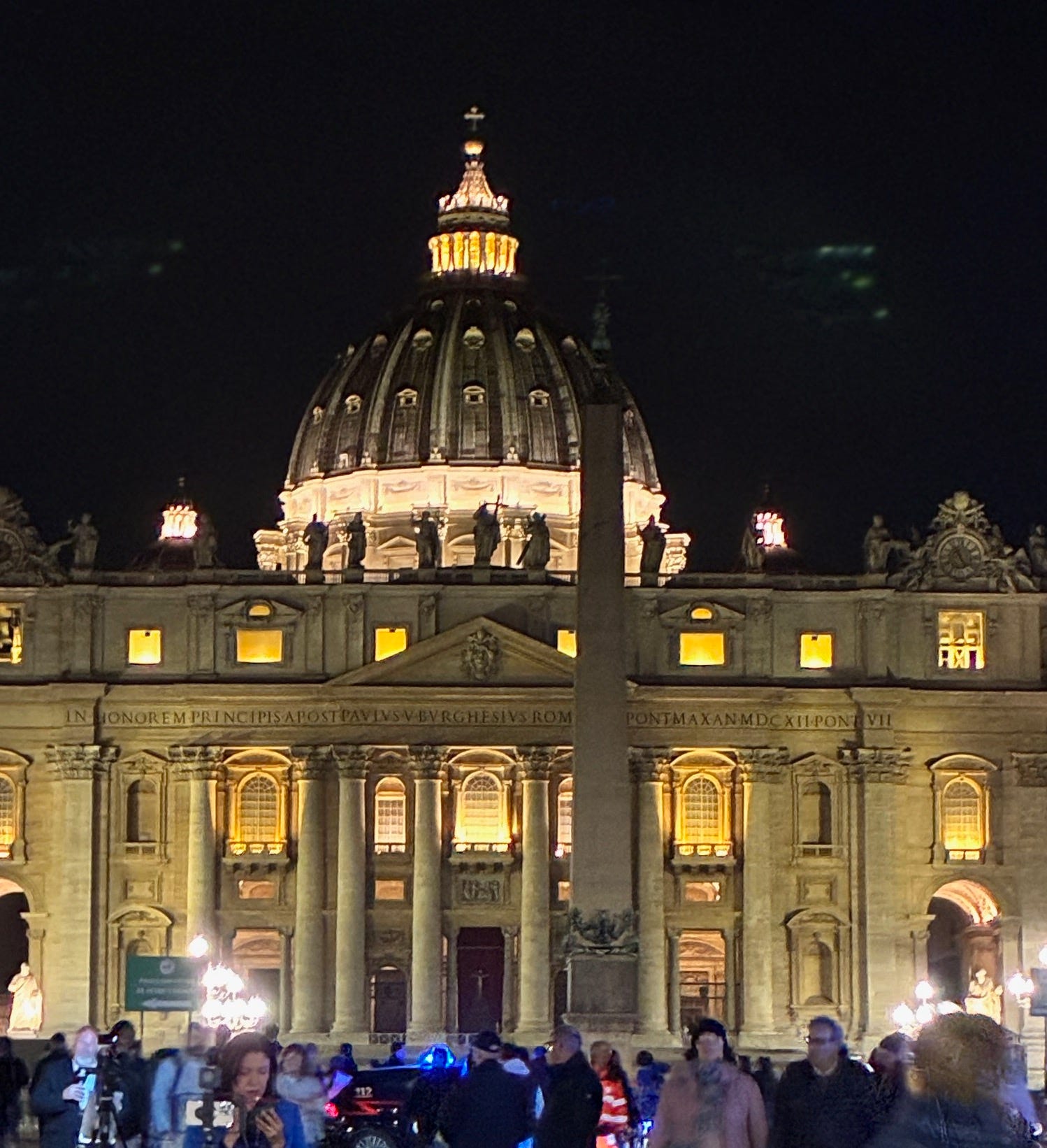

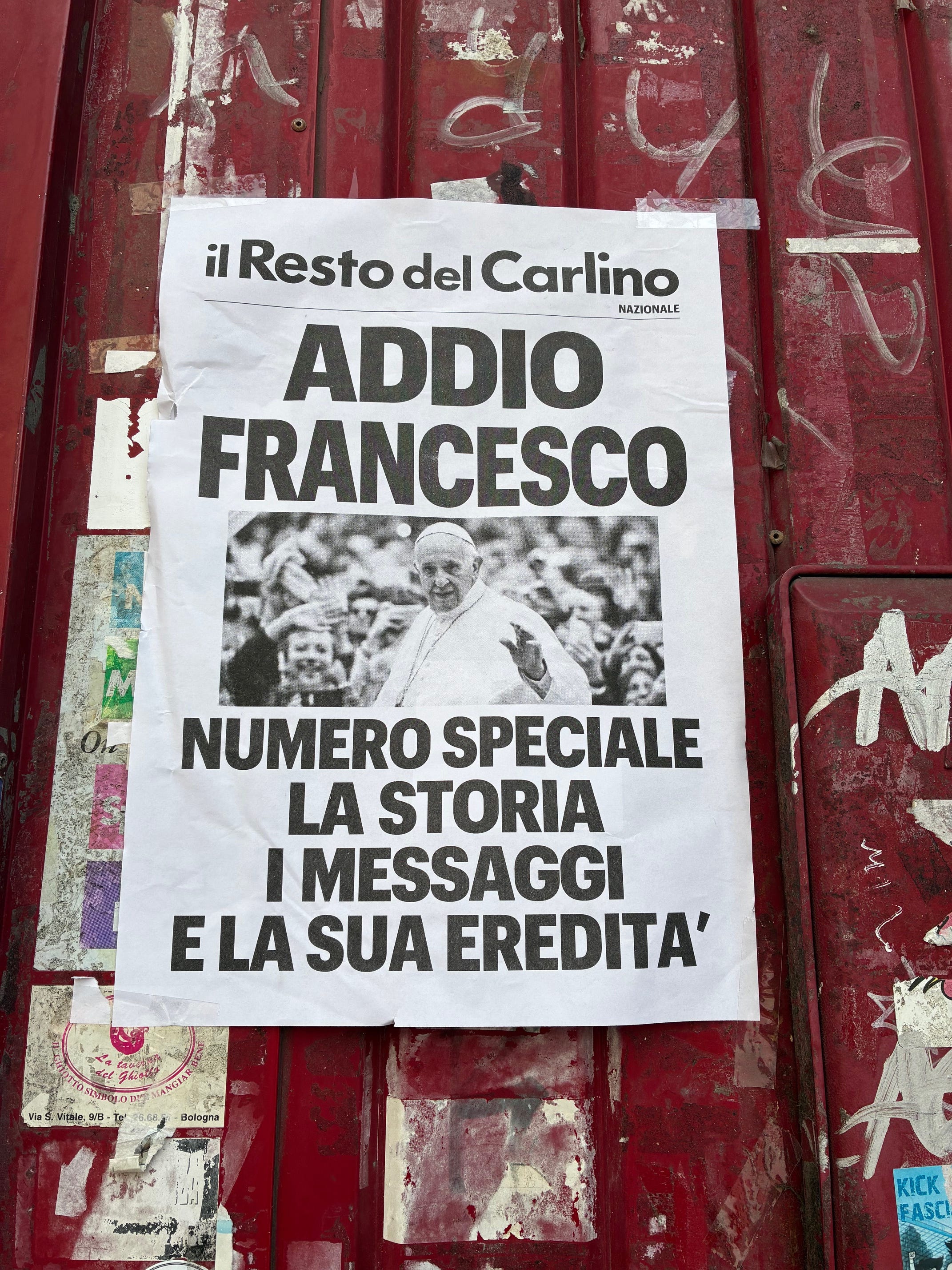
So appreciate your comment and your always insightful reading. Hope all is well in NYC. We made it to the funeral today in St. Peters-- was one of those experiences that it will take a minute to process.... Abbracci!
What a lovely commemoration. Special you could be there to celebrate his life.